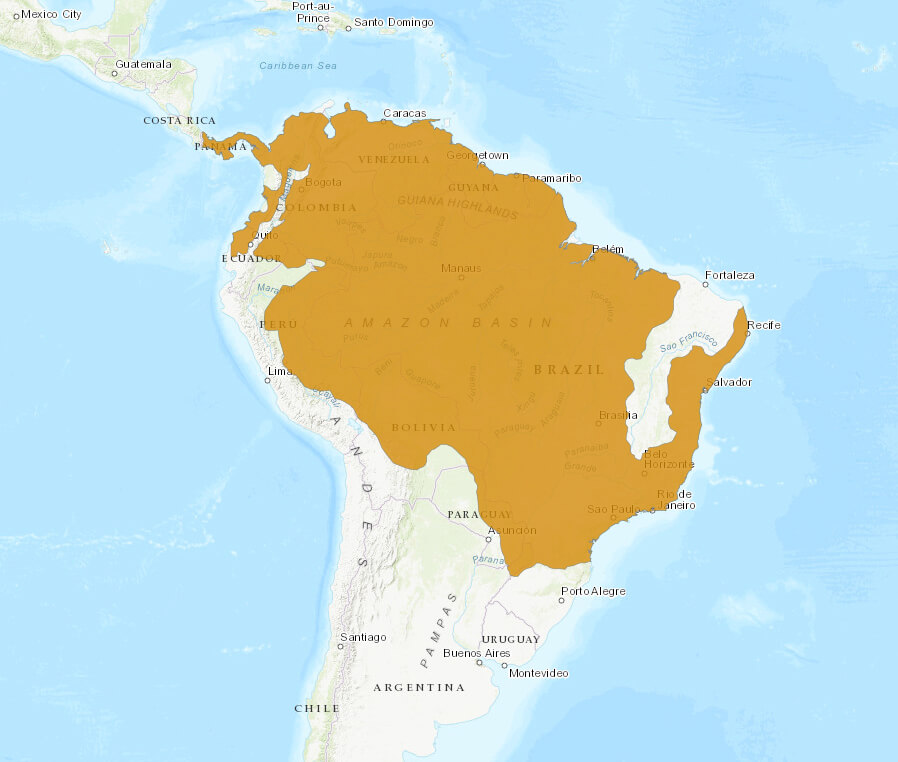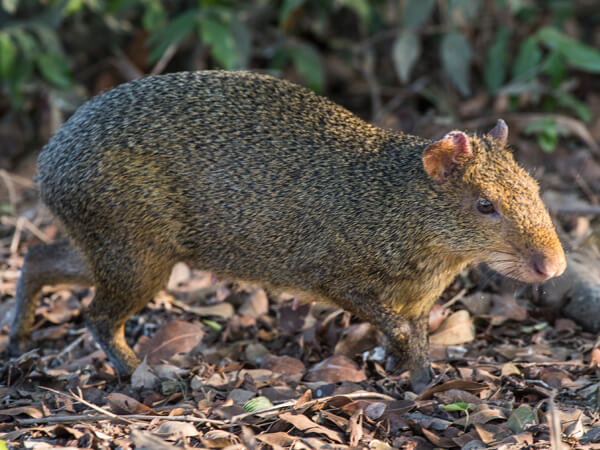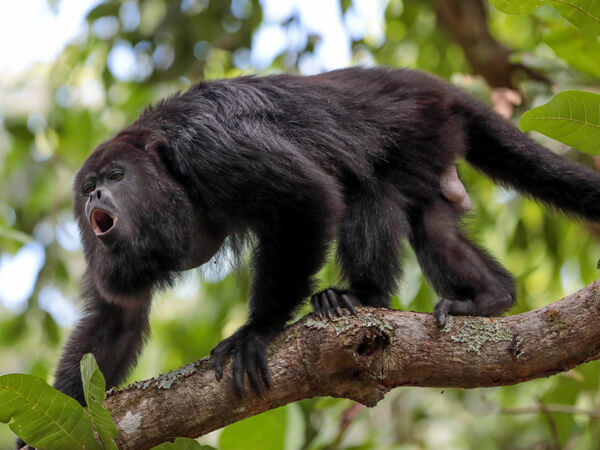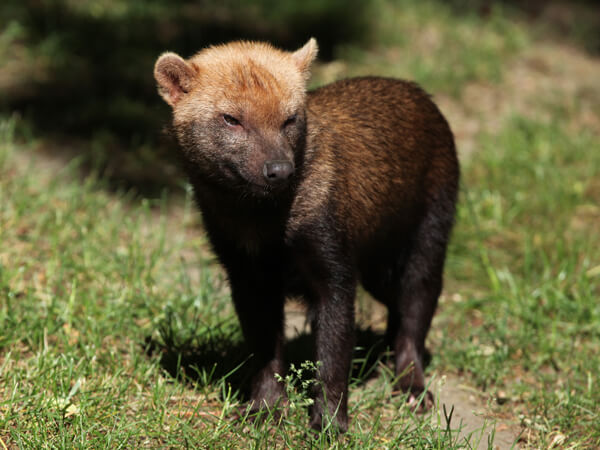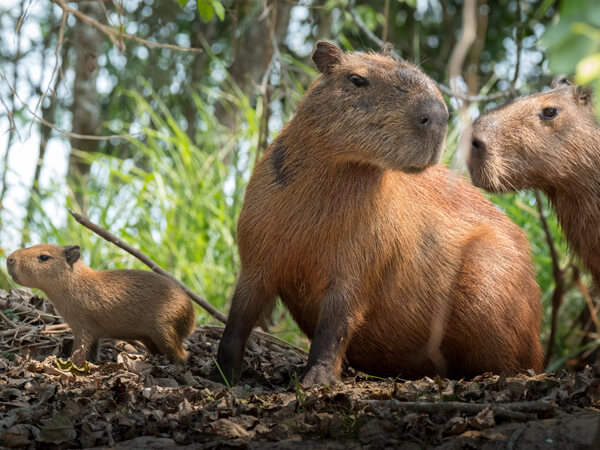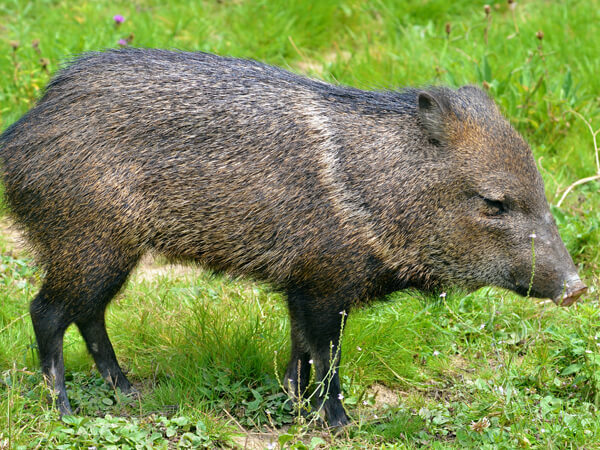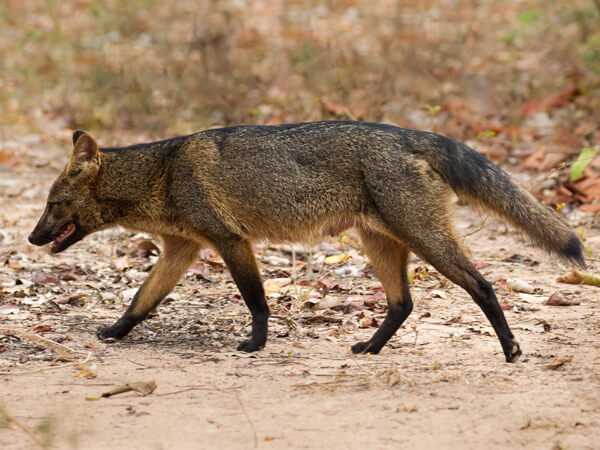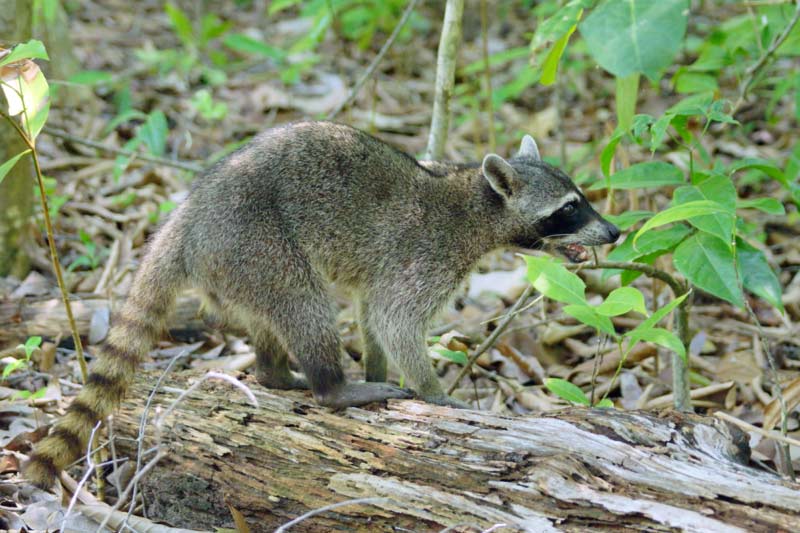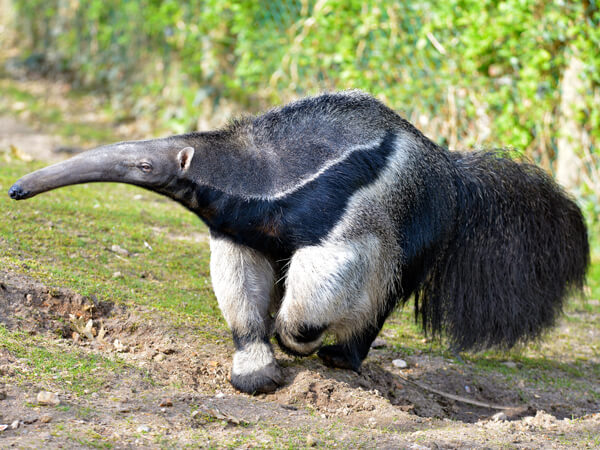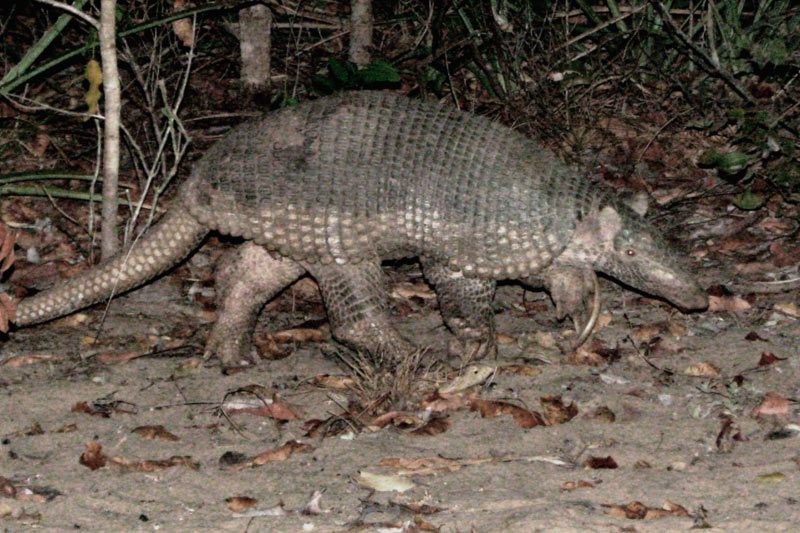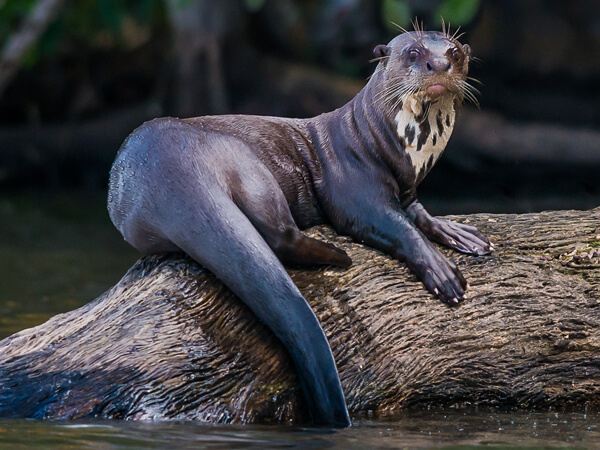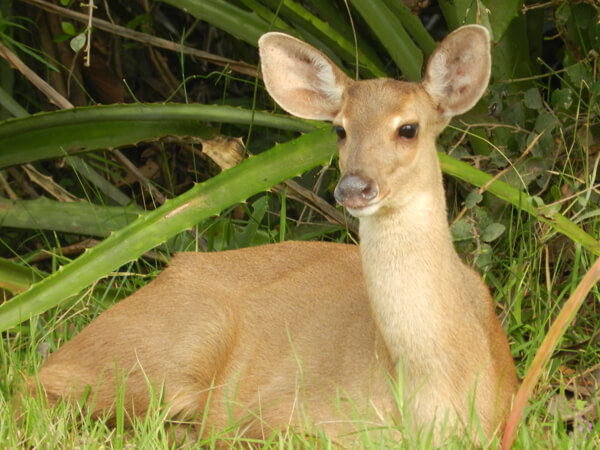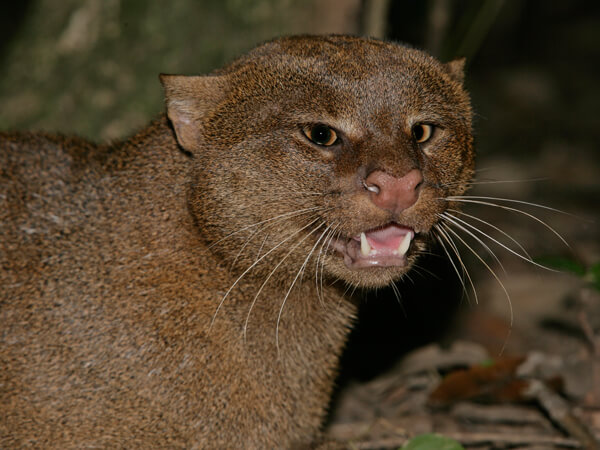The bush dog is an animal still little known to science due to its low population density and unsociable habits. It is a small canid, with round ears and short legs, and lives near aquatic environments.
Click to learn more
Distribution
The species is found from Panama to the south of Brazil. It is present in the biomes of the Amazon, Atlantic, Savanna and Pantanal, but has recently been recorded in the Caatinga area – outside the historical occurrence area for the species.
Features
Bush dogs are the most sociable among the small canids, living in flocks of between two and 12 individuals. They measure between 57 to 75 centimeters, and the length of their tails is between 12 to 15 centimeters. Bush dogs weigh from five to eight kilograms. They have a long body, rounded ears and short legs, with membranes between their fingers that facilitate their mobility in water. They are a reddish-brown color, and their young are born gray.
Behavior
Bush dogs live mainly in forests, usually near water sources, but they may also utilize open areas (Cerrado) away from aquatic environments. They are mainly diurnal, spending their nights in burrows. The living area estimated for a group of bush dogs is 140 square kilometers. They use urine in the demarcation of territory by standing on both front paws, lifting the trunk and hind legs to urinate on a tree or rock, thereby achieving greater height than if standing on all four legs. Bush dogs are usually associated with preserved environments. They have a very wide vocal repertoire to communicate between individuals of the group. Some authors suggest that they mimic the sound of their prey to attract them.
Food
Bush dogs are generally carnivores and they hunt, for the most part, armadillos and large rodents such as paca and agouti. They also feed on mice, rabbits, skunks, raccoons, tegu lizards, snakes and land birds. Bush dogs hunt in small and medium-sized groups, as they are small animals. When hunting in packs, they can kill larger prey, such as capybaras, emus, deer and peccaries, employing a variety of cooperative hunting strategies. They attack the legs of large animals to make them fall, and can also follow their prey in deep water.
Reproduction
Bush dogs reproduce all year, and, during this period, both the male and female separate from the group. Gestation ranges from 60 to 83 days, and usually one to six cubs are born. They are weaned after 75 days. The male helps the female throughout the parenting stage. Young bush dogs that remain with their parents after reaching sexual maturity do not reproduce.
Conservation
Bush dogs have been considered “nearly threatened” according to the IUCN. However, in Brazil, the species is considered “vulnerable” by the national list of the ICMBio.
Bush dogs are a rare species and their conservation must be encouraged, as burning of their habitats through forest fires and reduction of their food, such as pacas, threatens their survival. Some years ago, their population was distributed throughout Brazil, but today it is quite fragmented, and confined to protected areas. They are threatened by habitat loss and direct persecution, being accused of preying on domestic animals. Bush dogs are critically endangered in Parana, Sao Paulo and Minas Gerais.

